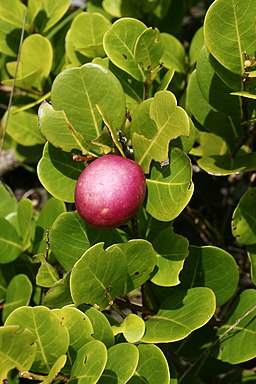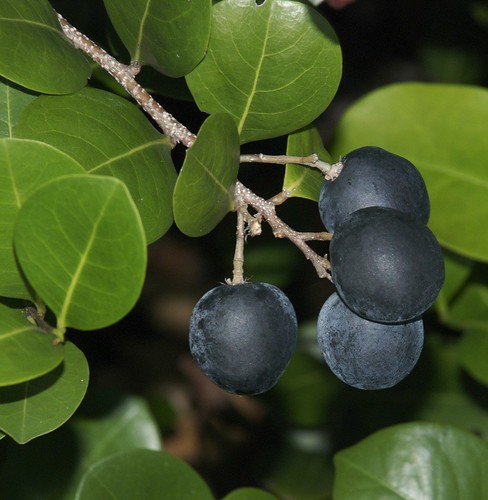It's a hedge, it's a tree, it's a delicious edible fruit! It's a Coco Plum! Next to Palm and Pine it is also probably one of the most over-used obligatory plant-name/business-monikers in the tropics. Seriously, there's a resort in Belize, there's a Beach and Tennis Club in Key West, and an appliance store in Vermont (?) that all get higher google ranking than the wikipedia article about the plant.
But it shouldn't be so. It's a very nice plant, Chrysoblanus icaco. All over south Florida, every well-groomed native planting and every scrubby wetland ecosystem is bursting with this attractive, round-leaved native plant.
It has two varieties- an upland and a coastal type. In the picture above you can see the fruit of the upland type. This coco plum can become a bushy tree up to 10 feet tall, bearing dusky purple fruits and dark red growth tips. The coastal type, on the other hand, grows shorter, maybe three feet tall, its new growth blushing only slightly, and its fruits a soft white to pinkish-purple as below.

As my parents and I strolled through a coco plum corridor in Apoxee Park, I squeezed the soft white and pink fruits, wondering how they would taste, but uncertain if their attractive, smooth skin hid poison beneath. My grandmother came to visit us for Thanksgiving and encouraged me to taste the upland variety on another hike. The dark purple fruits turned out to be mostly seed, with a thin layer of white bread-like pulp, dry but sweet. It retreated from my bite, mashed into a shiny white mold of my front teeth. The dark eggplant skin was thick and a little rubbery. I found myself disappointed that I couldn't find more juice in them.

No comments:
Post a Comment